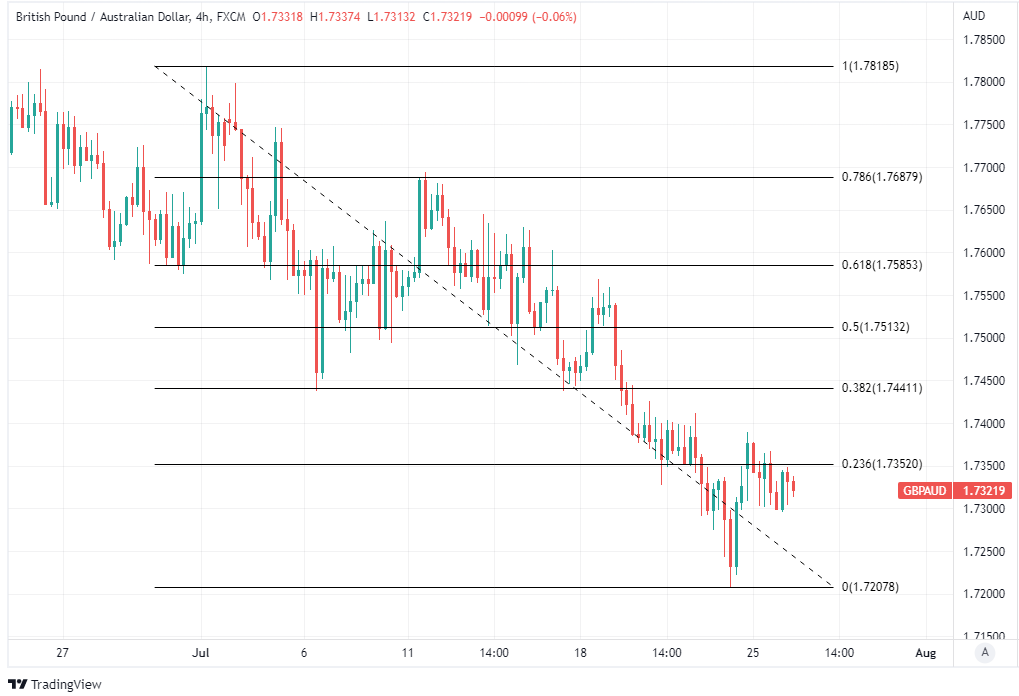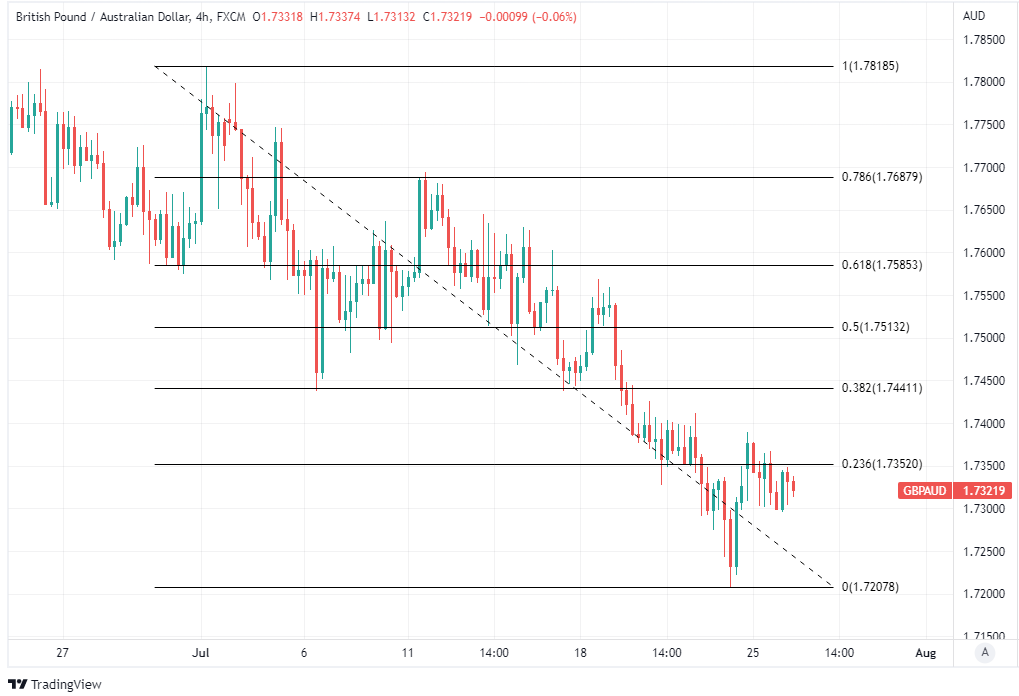GBP/AUD Rate Supported Above 1.72 as Data Deluge Looms
- Written by: James Skinner
-
- GBP/AUD near 2022 low but could hold 1.72
- Could struggle to sustain rallies near to 1.75
- AU CPI data & RBA implications key for AUD
- Fed policy risk & key U.S. data ahead for all
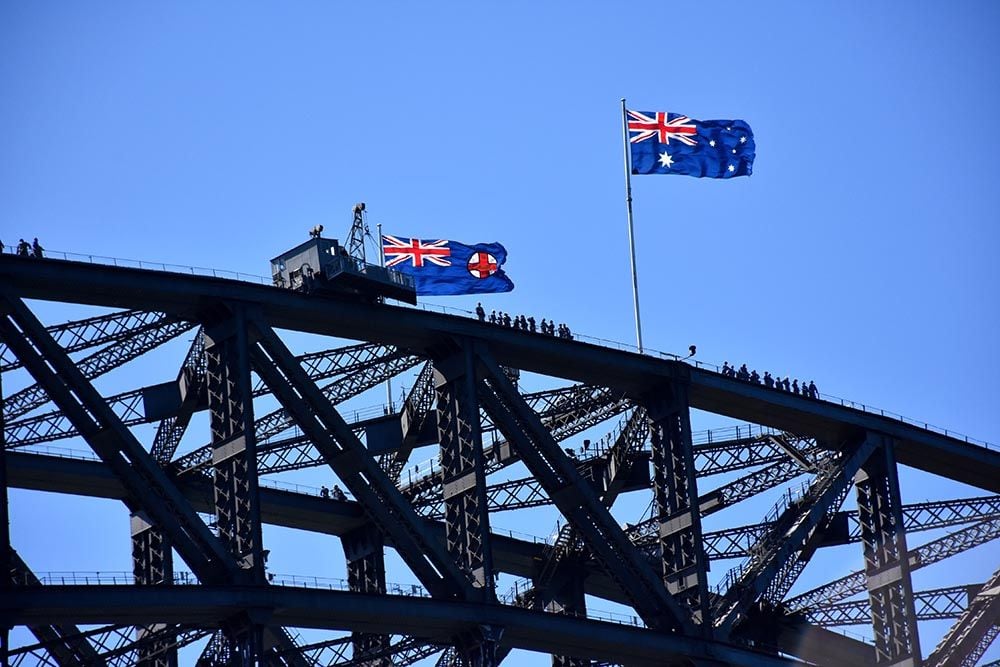
Image © Adobe Stock
The Pound to Australian Dollar rate entered the new week near 2022 lows following a July long decline but could find a footing to trade within roughly a 1.7244 to 1.7498 range through the days ahead if a busy schedule of event risks pans out well for the the Aussie and Sterling.
Australia’s Dollar and Sterling both benefited alongside many other currencies as the U.S. Dollar eased from recent highs across the board in the week to Tuesday, leading GBP/AUD’s July decline to extend almost as far as the round number of 1.72 late last week.
But each and all now face a deluge of event risks that could yet disturb the peace among risk sensitive currencies including the latest Federal Reserve (Fed) interest rate decision and second-quarter U.S. GDP data that comes amid speculation suggesting a recession may be imminent.
However, before then the Australian Dollar also has inflation figures for the second quarter and their possible implications for Reserve Bank of Australia (RBA) interest rate policy to contend with, and this is one of the bigger risks on the downside for the GBP/AUD pair.
“The Australian Q2 2022 CPI could influence the market’s pricing for a 50bp increase by the Reserve Bank of Australia in August,” says Joseph Capurso, head of international economics at Commonwealth Bank of Australia.
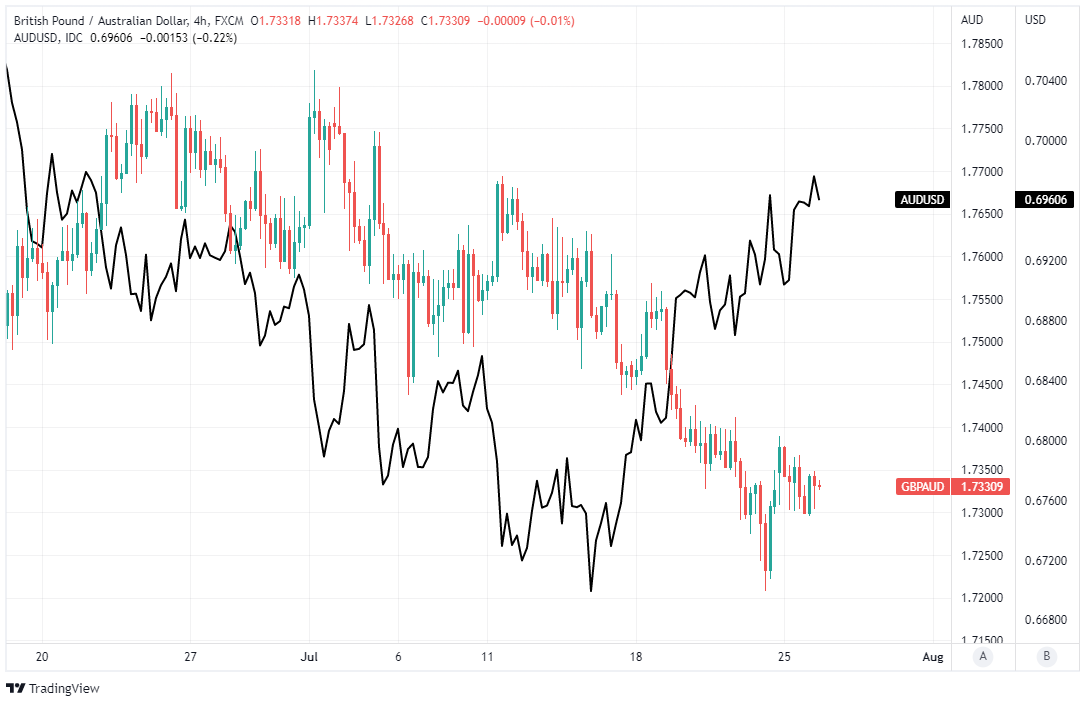 Above: GBP/AUD shown at 4-hour intervals alongside AUD/USD.
Above: GBP/AUD shown at 4-hour intervals alongside AUD/USD.
“A very strong trimmed CPI, say 1.7%/qtr or more, could encourage the market to price a 75bp increase in August, and help AUD to lift against most currencies. But we expect any increase in AUD/USD over 0.7000 to be short‑lived because the darkening global outlook will be a greater weight on AUD in our view,” Capurso and colleagues said on Tuesday.
Consensus among economists looks for Australia’s main inflation rate to fall from 2.1% to 1.9% when the data is released in the early hours of Wednesday morning and for the trimmed mean measures - which ignores price changes for the most volatile 30% of items - to rise from 1.45 to 1.5%.
But inflation figures emerging from other countries are anything to go by, the risk is of higher numbers on both counts this Wednesday that would likely argue for a faster pace of monetary policy normalisation - or interest rate rises - from the RBA during the months ahead.
“The quarterly inflation pulse is likely to strengthen for both the headline (2.3% q/q) and trimmed mean (1.9% q/q) measures,” says David Plank, head of Australian economics at ANZ.
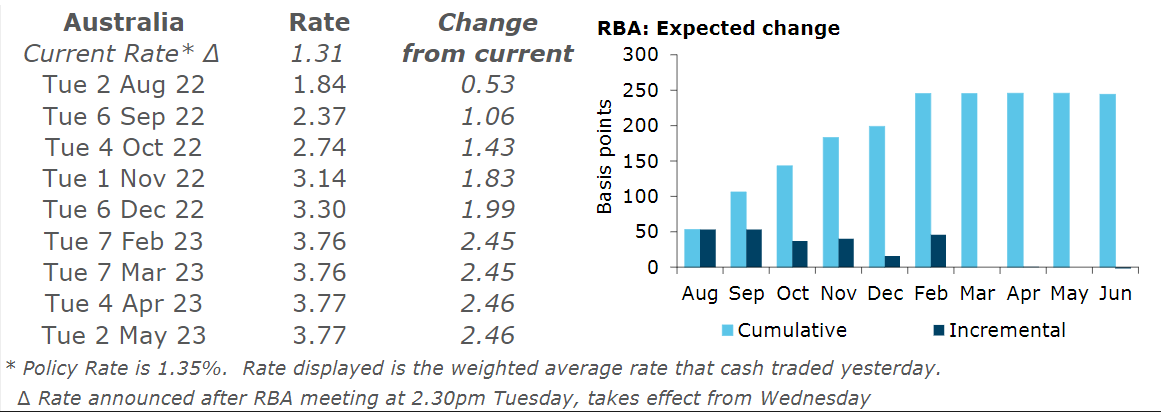 Above: Market-implied expectations for RBA cash rate. Source: ANZ.
Above: Market-implied expectations for RBA cash rate. Source: ANZ.
“A big upward surprise could see the RBA move 75bp in August, though we think 50bp is more likely at this stage,” Plank said on Monday.
The inflation figures will come just days after minutes of the July RBA policy meeting were released in close proximity to speeches from Governor Philip Lowe and Deputy Governor Michele Bullock, all of which suggested the cash rate will likely need to rise to the “neutral level” or above up ahead.
Estimates vary widely but the neutral level is thought to be somewhere above 2.5% but how quickly the RBA attempts to get the cash rate up to that level is likely to be an important influence on the Australian Dollar and Wednesday’s inflation figures will be influential in that regard.
“In our view, the RBA’s estimate of neutral is a bit high, unless inflation expectations rise. This means we see a cash rate in the low 3s as more restrictive than the RBA is likely to view it,” ANZ's Plank said on Monday.
 Above: GBP/AUD shown at daily intervals.
Above: GBP/AUD shown at daily intervals.
Any large upside surprise from Wednesday’s inflation data could lead to market speculation about RBA policy that lifts the influential AUD/USD pair and weighs on the Pound to Australian Dollar exchange rate, although after this point market attention could shift quickly to the Fed and U.S. data docket.
“The mildly upbeat tone in financial markets remains at odds with the coming energy crisis/ recession in Europe and a spate of earnings downgrades from US companies including Walmart due to a number of factors including high food and fuel prices plus a strong US$,” says Robert Rennie, head of financial market strategy at Westpac.
“However, the A$ held our key support levels last week and remains one of the strongest G10 currencies, suggesting the market is not willing to embrace our more cautious view here. A close above 0.6960 would point to a continuation of the recent recovery, and strength possibly as high as 0.7020/30, though we doubt such a break will be sustainable for long,” Rennie said on Tuesday.
The impact that the Fed and U.S. data have on the U.S. Dollar will be influential for many currencies this week and could lead GBP/AUD down to the 1.7244 area if price action works out in favour of the Westpac team and AUD/USD climbs above the 0.70 handle as a result.
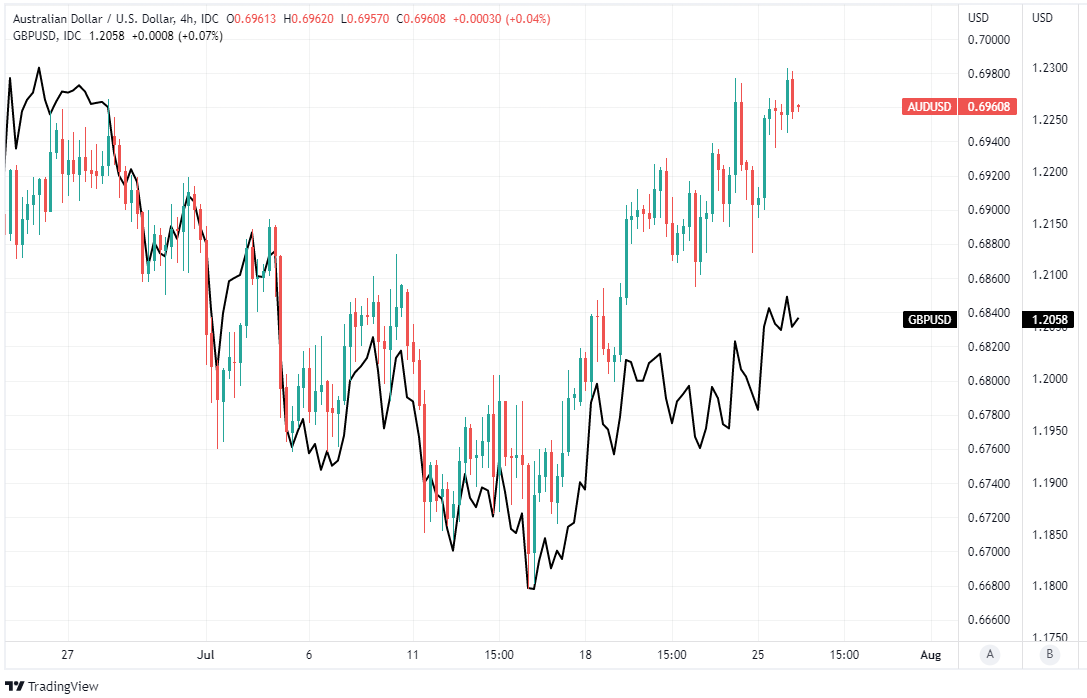 Above: AUD/USD shown at daily intervals alongside GBP/USD.
Above: AUD/USD shown at daily intervals alongside GBP/USD.
The Pound to Australian Dollar rate tends to closely reflect the relative performance of Sterling and the Aussie when each is measured against the U.S. Dollar, although Sterling often struggles to keep up with the Aussie when the U.S. Dollar is falling and other currencies are rallying.
This also works in reverse, however, and that’s why GBP/AUD could rise and end the week closer to 1.75 if events in the U.S. lead to a rebound by the greenback, although whether this happens will depend on what the Fed says on Wednesday and on Thursday’s U.S. GDP data.
“We think the balance of risks are tilted to the FOMC delivering a larger increase in the Funds rate (ie 100bp) and/or a hawkish statement and press conference, and therefore a stronger USD,” CBA’s Capurso and colleagues say.
“If GDP contracts for the second consecutive quarter in Q2 2022, the US would meet the conventional definition of recession (even if the US uses a different definition). If the recession is interpreted as isolated to the US, the USD could fall. But if the recession is seen as a prelude to recession elsewhere, the USD could jump as the preeminent safe haven,” Capurso and colleagues said.
Above: GBP/AUD shown at 4-hour intervals with Fibonacci retracements indicating possible technical resistances.








